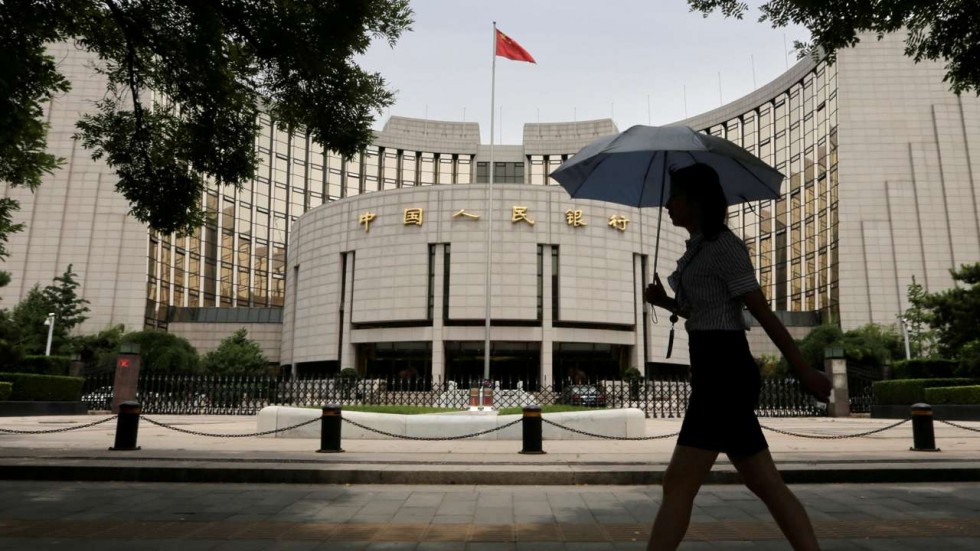China’s Banking System Hits $33 Trillion, Overtaking The Eurozone As World’s Largest
ZeroHedge.com
Something historic, if largely unnoticed, took place at the end of 2016: China’s banking system surpassed that of the eurozone, becoming the world’s largest by assets, which according to the FT is a sign of both of the country’s increased influence in world finance and its reliance on debt to drive growth since the global financial crisis. It is also a confirmation that when it comes to interwoven, “Too Big To Fail” financial systems, nothing compares to China and that the onus is on Beijing to keep its banks viable and solvent at all costs.
Chinese bank assets, frequently discussed here and which are also the basis for Kyle Bass’ bearish stance on China, hit $33 trillion at the end of 2016, versus $31 trillion for the eurozone, $16 trillion for the US and $7 trillion for Japan. The value of China’s banking system is now more than 310% the size of its GDP, compared to “only” 280% for the eurozone and its banks.
Putting China’s banking dominance in context, 4 of the 5 largest global banks are now Chinese:
“The massive size of China’s banking system is less a cause for celebration than a sign of an economy overly dependent on bank-financed investment, beset by inefficient resource allocation, and subject to enormous credit risks,” said Eswar Prasad, economist at Cornell University and former China head of the International Monetary Fund.
While China’s GDP – goalseeked as it may be – surpassed the EU’s in 2011, it was not until 5 years later that its banking system took over the top spot. The lag, as the FT notes, “reflects Beijing’s increased “financial deepening” — the term for the growth of a country’s financial system relative to gross domestic product. This has been fuelled by an extraordinary increase in bank lending since 2008, when the government unleashed aggressive monetary and fiscal stimulus to buffer the impact of the global crisis.”
As discussed here extensively, while China became the world’s growth dynamo during and after the financial crisis, spewing out between $3 and $4 trillion in credit creation each year, and buffering the sharp global drop following the Lehman failure, its continued growth since then is now raising alarm flags:
World leaders and economists lauded China’s stimulus at the time for helping to stabilise global growth at a time when developed countries were deep in recession. Now, however, the stimulus is seen as leading to significant wasteful investment, industrial overcapacity and dangerous debt levels.
Analysts note that unlike in developed markets, Chinese local governments have relied heavily on bank loans to finance infrastructure. Unlisted, state-owned policy banks — notably China Development Bank, with assets of more than $2tn — play a central role, while commercial banks also participate.
“There’s a lot of hidden sovereign credit within the corporate loans on bank balance sheets, which can distort the picture when you do a cross-country comparison,” said Hou Wei, China banks analyst at Sanford C Bernstein in Hong Kong. “In most other markets, governments just borrow directly from capital markets. In China, it’s a unique situation.”
Making matters worse, the real number is likely even greater due to the substantial impact of China’s shadow banking sector which largely remains off the books: the FT confirms that the headline figures understate the true scale of Chinese banks.
Shadow banking has exploded since 2010. While ostensibly off-balance-sheet, most of this credit remains closely linked to commercial banks. The central bank warned last month that the distinction between on- and off-balance-sheet assets is often hazy due to the prevalence of implicit guarantees. Banks have frequently provided bailouts for off-balance-sheet products, even where no legal obligation exists.
While in recent weeks, China’s top leaders have signalled that they intend to shift policy focus away from stimulus towards risk control, the truth is they have done so on numerous occasions in the past only to fail, and as a result concrete action is lacking. As we reported at the time, the flow of broad credit hit a new record in January.
“The Chinese government’s ambivalent approach to financial markets — seeing them as a useful resource-allocation mechanism but unwilling to let them operate freely, with the ostensible aim of maintaining stability and control — has often added to market volatility and made them less efficient,” said Prasad.
Of course, as long as it is merely volatility instead of an all out collapse, few will mind.
But a greater risk is that should the build up in loans, i.e., assets, continue, it will become increasingly difficult to maintain control. And, as Bloomberg writes in a separate report, the Chinese credit engine will keep humming this year, adding the rough equivalent of Germany’s annual economic output to its already massive stock of total social financing, based on estimates derived from the nation’s 2017 targets.
Adding higher equity market financing and about 5 trillion yuan ($725 billion) worth of local government bond swaps to the official credit growth target of 12 percent, analysts at UBS Group AG see TSF expansion of 14.8 percent this year. They calculate that’s equal to a whopping 23 trillion yuan, or $3.3 trillion, addition to the amount of total credit already swishing around the world’s second-largest economy. In other words, by the end of 2017, China’s banking syste, will be roughly $37 trillion and rising precipitously.
A major problem with China’s great ball of money, as it is also known, is that it creates a constant headache for policy makers as money flows from asset class to asset class, creating constant bubbles along the way, whether in real estate, stocks or commodities. It’s a particular dilemma for the People’s Bank of China because it needs new credit to generate the kind of growth its leaders desire — around 6.5 percent or higher if possible this year.


